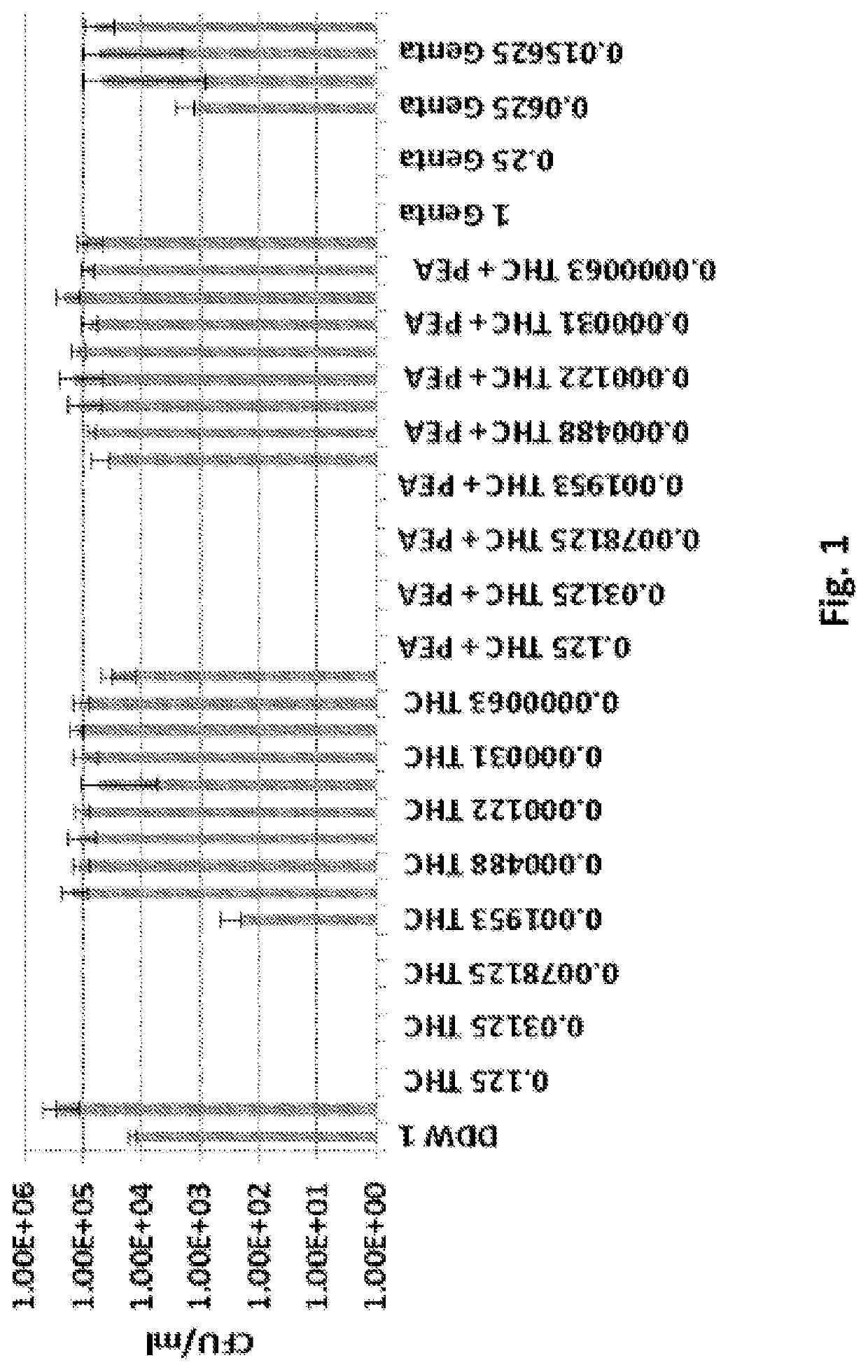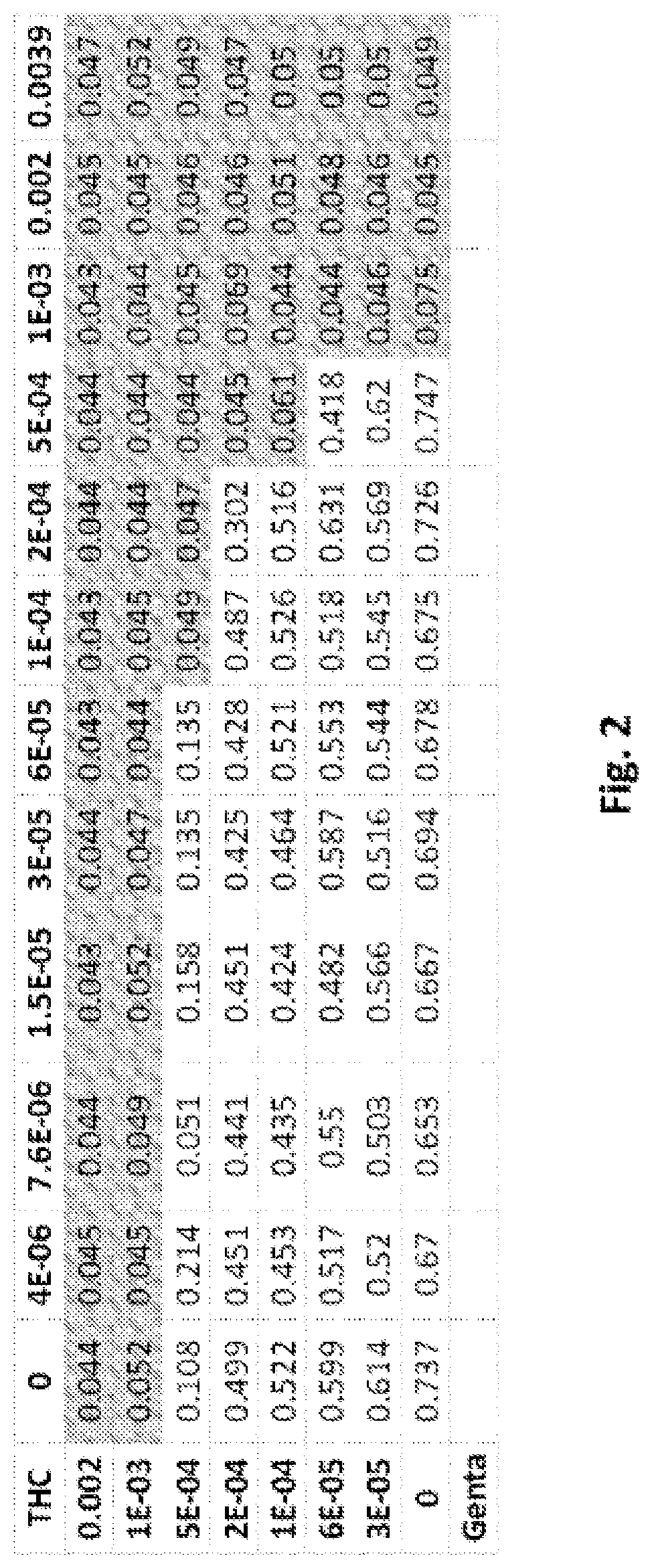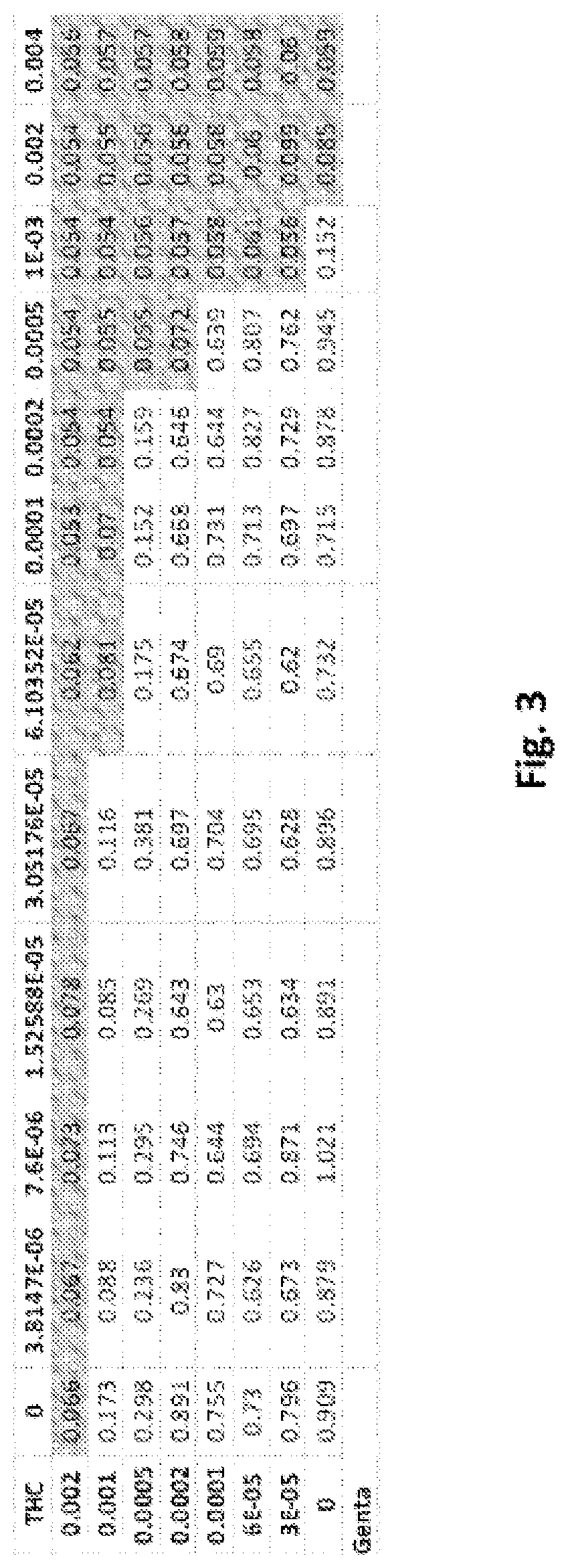Compositions and methods of potentiating antimicrobials
a technology of antimicrobial agents and compositions, applied in the field of compositions and methods of potentiating antimicrobials, can solve the problems of reducing reducing the effectiveness of antibiotics, and reducing the development of drug resistance, so as to reduce the minimal therapeutic dosage, reduce the effect of drug resistance and increase the potency of antimicrobial agents
- Summary
- Abstract
- Description
- Claims
- Application Information
AI Technical Summary
Benefits of technology
Problems solved by technology
Method used
Image
Examples
example 1
gistically Reduces the Effective Concentration of THC
[0172]The goal of the current experiment was to determine the minimal bactericidal concentrations (MBC) for THC with and without PEA on S. Aureus ATCC strain 25923 (gentamicin-sensitive).
[0173]Protocol:
[0174]1. Incubation of the S. aureus (from a −80° C. stock) in 3 ml Muller Hinton (MH, Difco) medium at 37° C. under agitation of 250 rpm for 18-20 hours (this culture served as a starter for the experiment);
[0175]2. Dilution of the starter culture using saline to obtain working cultures of 5*105 and 106 C.F.U / mL bacteria, respectively.
[0176]3. Diluting the THC (0.125 mg / mL in saline) with or without PEA or gentamicin in a 96-well plate.
[0177]4. Incubation of the plates at 37° C. under shaking (100 rpm) for 18-20 hours.
[0178]5. In the following day, the bacteria in the wells suspended in saline were evaluated for their C.F.U / mL to determine the MBC.
[0179]Results: The MBC value for THC alone was found to be about 0.0078 mg / ml, a 32-f...
example 2
gistically Reduces the Effective Concentration of Gentamicin
[0180]The goal of the current experiment was to determine the minimal inhibitory concentration (MIC) for gentamicin with and without THC on S. Aureus ATCC strain 25923 (gentamicin-sensitive). The cutoff value to determine the MIC was set to an optical density (OD) value of ≤0.1. The results are summarized in FIG. 2.
[0181]Results: The MIC value for THC alone was found to be about 0.001 mg / mL, while the MIC value for gentamicin alone was also found to be about 0.001 mg / mL. However, the MIC value for gentamicin was synergistically reduced by 4-fold to 16-fold in combination with THC compared to gentamicin alone (0.0005 mg / mL Gen.+0.0001 mg / mL THC; 0.0001 mg / mL Gen.+0.0005 mg / mL THC).
example 3
gistically Reduces the Effective Concentration of Gentamicin
[0182]The goal of the current experiment was to determine the minimal inhibitory concentration (MIC) for gentamicin with and without THC on S. Aureus ATCC strain 25923 (gentamicin-sensitive). The cutoff value to determine the MIC was set to an optical density (OD) value of ≤0.1. The results are summarized in FIG. 3.
[0183]Results: The MIC value for THC alone was found to be about 0.002 mg / mL, while the MIC value for gentamicin alone was also found to be about 0.002 mg / mL. However, the MIC value for gentamicin was synergistically reduced by 4-fold to 64-fold in combination with THC compared to gentamicin alone (0.0002 mg / mL Gen.+0.0005 mg / mL THC; 0.00003 mg / mL Gen.+0.001 mg / mL THC).
PUM
| Property | Measurement | Unit |
|---|---|---|
| concentration | aaaaa | aaaaa |
| concentration | aaaaa | aaaaa |
| concentration | aaaaa | aaaaa |
Abstract
Description
Claims
Application Information
 Login to View More
Login to View More - R&D
- Intellectual Property
- Life Sciences
- Materials
- Tech Scout
- Unparalleled Data Quality
- Higher Quality Content
- 60% Fewer Hallucinations
Browse by: Latest US Patents, China's latest patents, Technical Efficacy Thesaurus, Application Domain, Technology Topic, Popular Technical Reports.
© 2025 PatSnap. All rights reserved.Legal|Privacy policy|Modern Slavery Act Transparency Statement|Sitemap|About US| Contact US: help@patsnap.com



